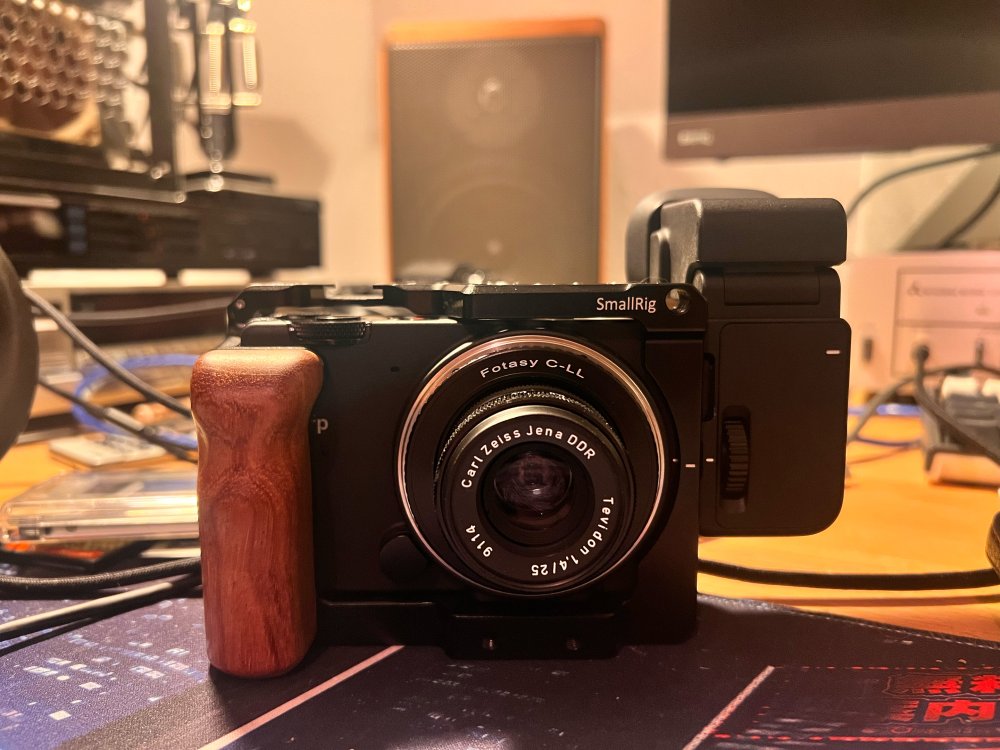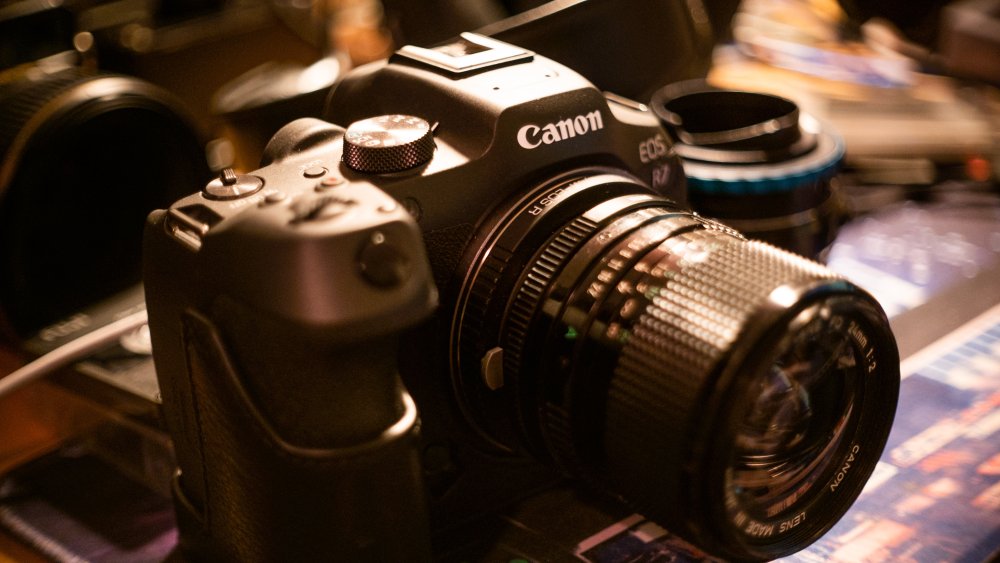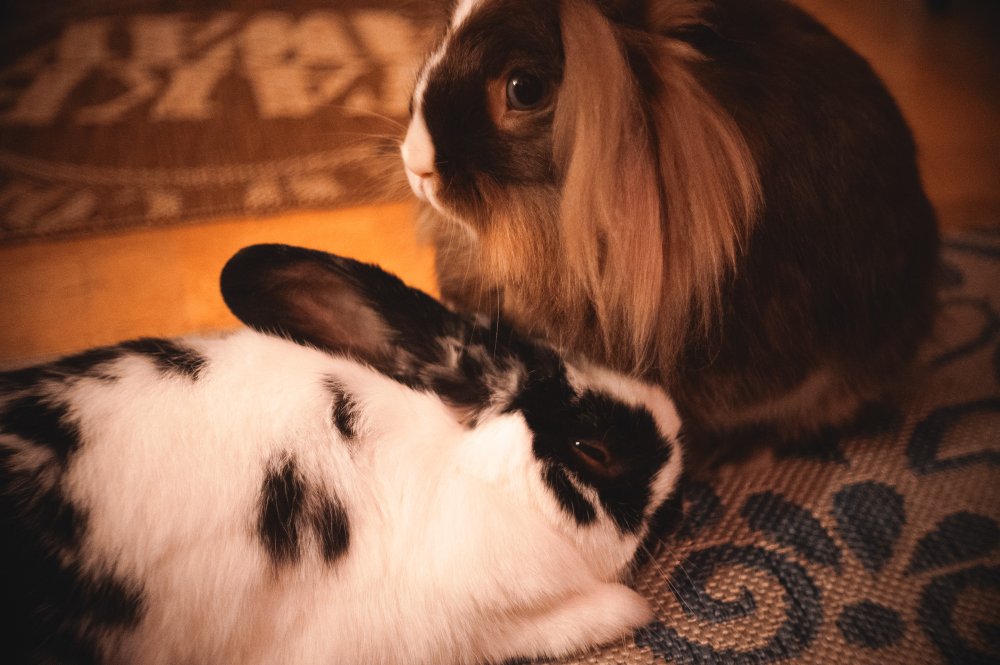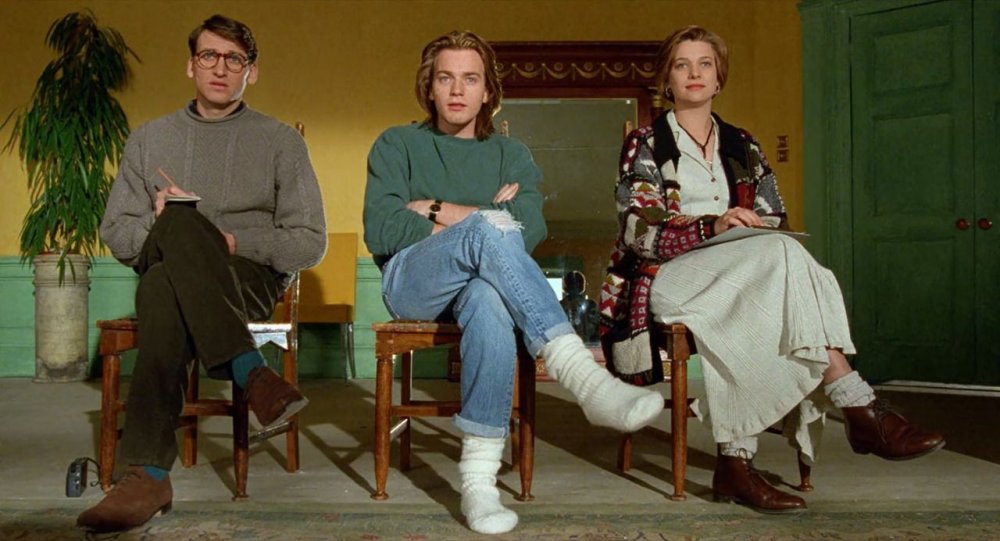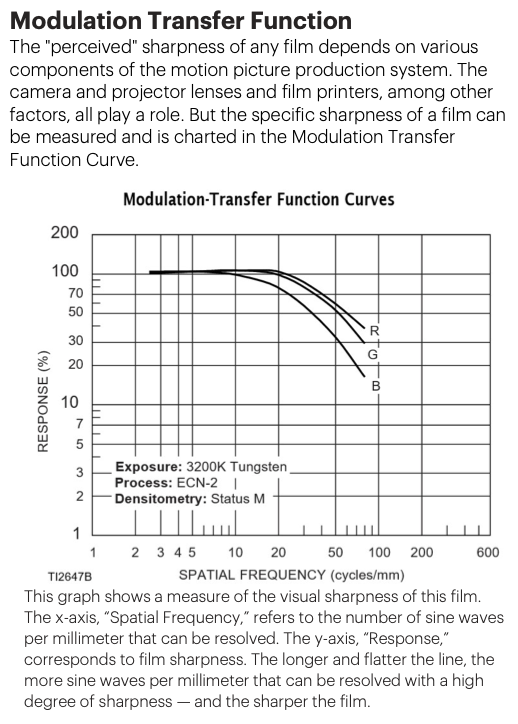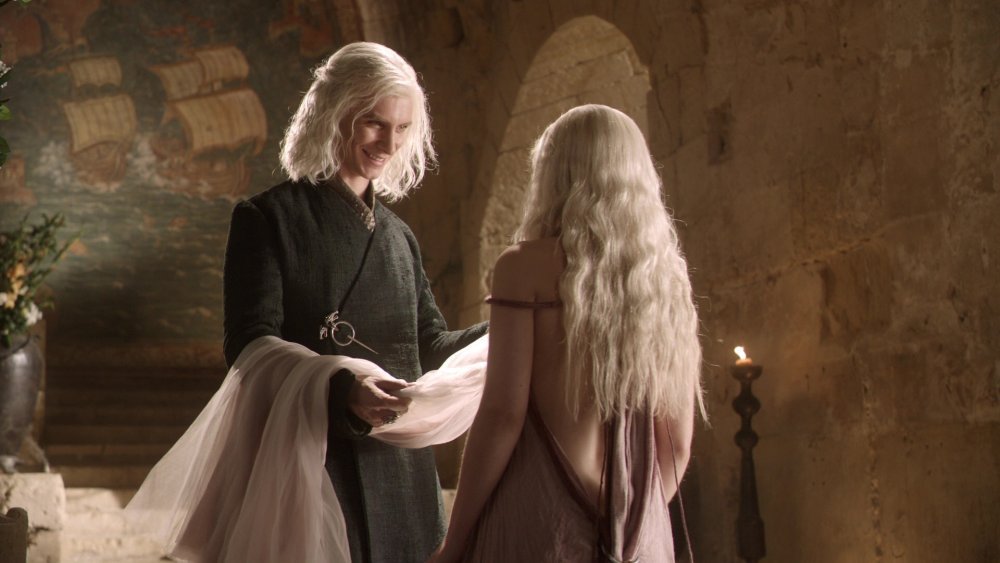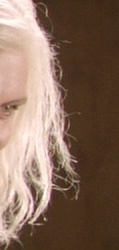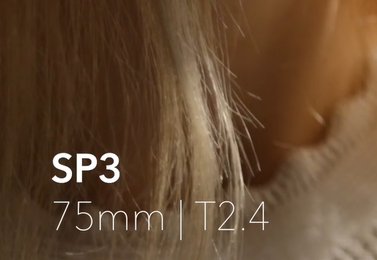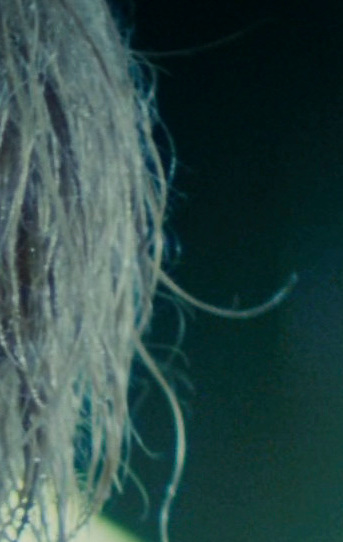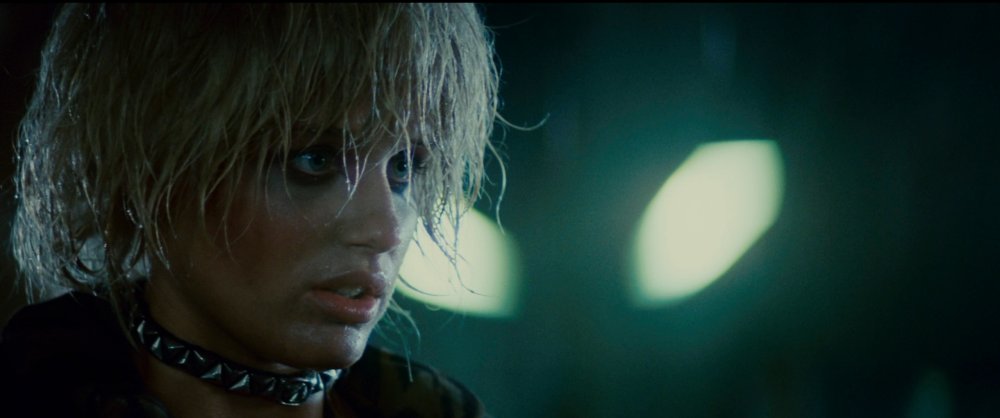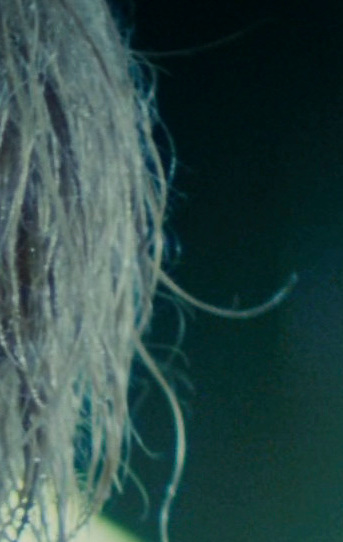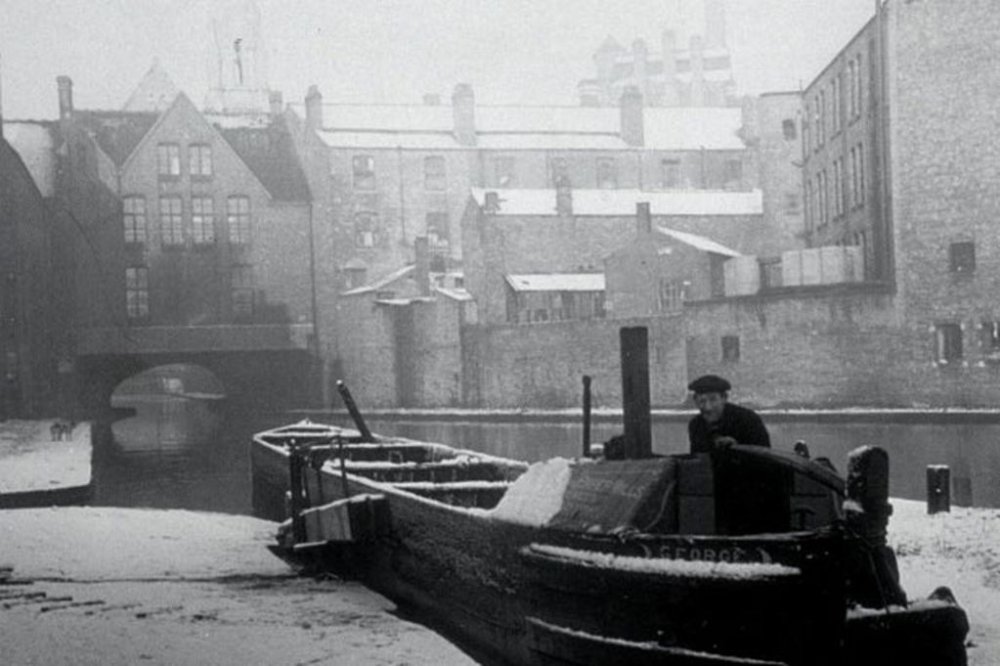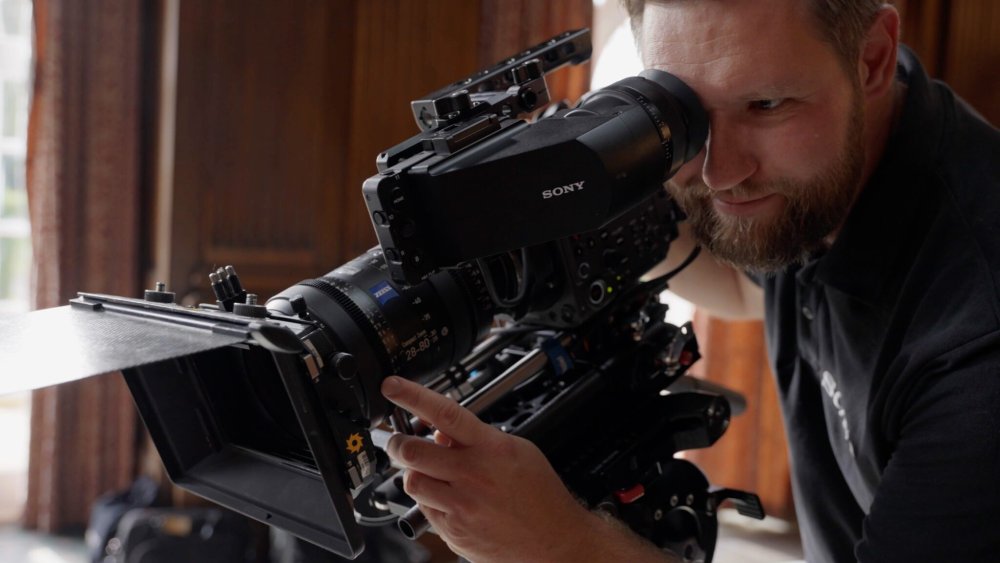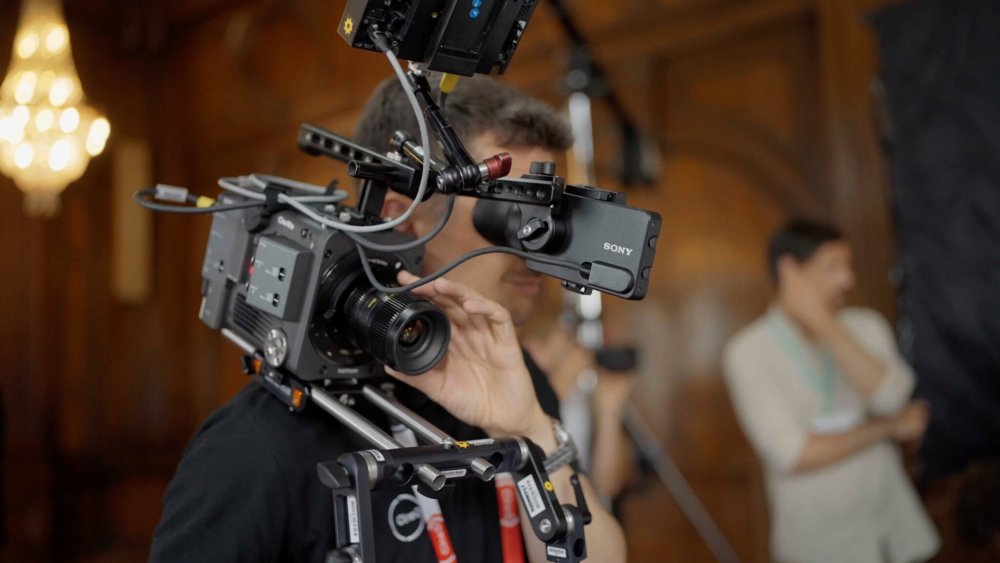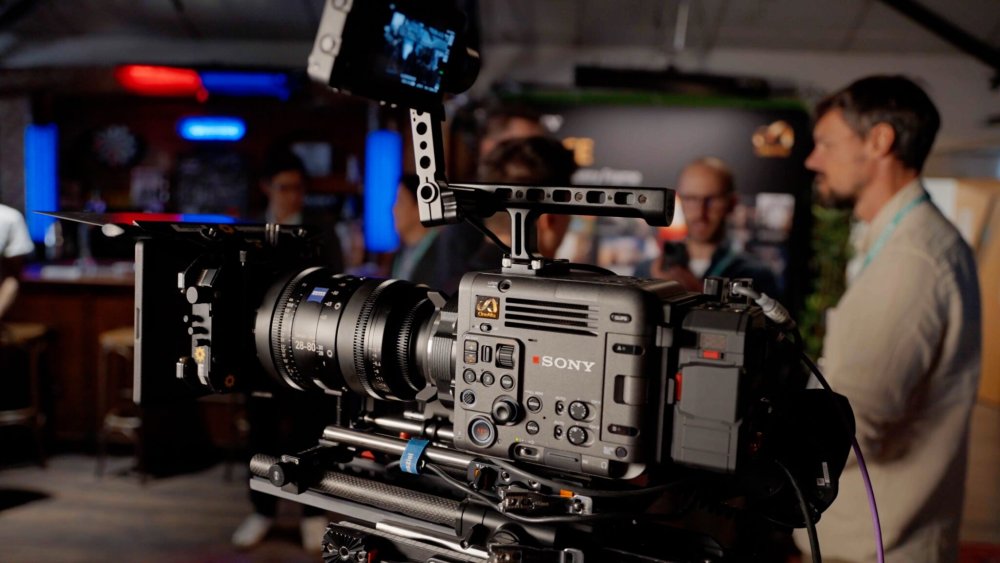Leaderboard
Popular Content
Showing content with the highest reputation on 09/23/2023 in all areas
-

Sigma Fp-L with c-mount lenses
amweber21 and 5 others reacted to Andrew Reid for a topic
Didn't think this would work at first. Turns out it does, and then some! The 9.5K sensor in this thing has enough left over for 4.8K in 2x crop mode The Ultra HD is oversampled from this 4.8K and we have our nice looking Cinema DNG internal to SD card. Something the Micro Four Thirds cameras can't do. So it is basically a Digital Bolex at this point. Frame grab: The form factor is also perfect for these lenses being so small. It feels balanced as a Super 16mm handheld candid camera. It has one over on the Sony a1 for c-mount as well... The 2x crop is sticky, between Cine and Stills, and is remembered every time you turn it on. Whereas the Sony clear image zoom keeps getting reset when you power down or switch modes. So yeah, I think my Digital Bolex D16 itch has finally been scratched!! It's also perfect for bunny pics6 points -

Canon mirrorless market lead. What went wrong for Panasonic and Sony?
Emanuel and one other reacted to Andrew Reid for a topic
For ages they had the mirrorless market to themselves. Now Canon DSLRs are finally dead, the mirrorless market has a new leader https://www.eoshd.com/news/how-panasonic-and-sony-let-canon-steal-the-mirrorless-camera-lead/ Canon! I take a look at how this happened.2 points -
I got quite excited when they originally released the Prores support in their previous model as every camera I've seen with Prores had great images that had minimal processing, but unfortunately they just implemented it as a high-bitrate version of the same heavily processed mess that they sent to h265 compression. However, I'd be extraordinarily happy to be proven wrong! I use my phone as the second camera on my travels and it would be great if it could live up to its potential 🙂2 points
-
https://petapixel.com/2023/09/05/canon-has-nearly-50-of-camara-market-share-nearly-double-sony/ "As reported by Digital Camera Info and Digital Camera World, an annual Inspection World Share data report from Nikkei Shimbun — a Japanese business publication — shows that Canon, far and away, dominates the camera market with 46.5% of all units sold in 2023. The data, provided by Techno System Research, found that Canon sold over 3.348 million camera units in the same period that Sony sold around 1.879 million units. The report does not make a distinction between mirrorless cameras and DSLRs. Nikon holds 11.7% of the market in a distant third, with Fujifilm and Panasonic following with 5.8% and 4.2% market share each. These top five companies account for 94.3% of the entire camera digital camera market share. Comparing this with a 2022 sales report published by Digital Camera Life, it’s likely that Canon continues to rely heavily on its DSLR sales, at least in terms of volume. Canon’s mirrorless market share is still higher than Sony’s, but the race is much closer: 1.54 million units versus 1.25 million units. Further, Sony is actually ahead of Canon when it comes to the value of those sold cameras. Canon’s higher number of camera bodies sold equated to 506.7 billion yen, while Sony sold fewer units for a sales value of 565 billion yen. Canon seems to be excelling when it comes to selling more affordable cameras, while the opposite is true for Sony. All of this said, the breakdown of the market share leaders isn’t that different than in previous years, as Canon’s lead has only increased by 0.7%. Sony’s fell by a scant 0.9%. Nikon’s rose by 0.4%. There is not a lot of movement from any company on the top five list."2 points
-
Are polls still there? Maybe this topic requires a poll? With suggestions for the options, before the polls are opened. Mine would be 'too slow to adopt PDAF', and 'abandoning small cameras like the GM/GX lineup'. Their supply chaim and marketing are also disappointing.2 points
-
Canon mirrorless market lead. What went wrong for Panasonic and Sony?
Davide DB and one other reacted to newfoundmass for a topic
Canon was always going to have an advantage because of their legacy lenses and near native performance on their RF cameras. Plus the name is just massive. I think though that camera sales are only part of the picture. Are those people buying new lenses, or are they using their legacy lenses on the new bodies? Also, what is the regional break down? I see A LOT Sony cameras these days, especially professionally. Most social media and web content teams use them for photo and video, from local companies to national companies (my friends working for WWE, All Elite Wrestling, and the UFC all shoot on Sony, for example.) The social media teams for most major venues in my neck of the woods, like TD Garden in Boston, also are using mostly Sony. But I'm also located in the Northeast United States/New England, so it might be different in other parts of the world or even other parts of the country. I also want to, but cannot for certain, say that Sony has the edge here for wedding shooters, though Canon has a heavy presence there too, especially amongst older professionals.2 points -

Canon mirrorless market lead. What went wrong for Panasonic and Sony?
Emanuel and one other reacted to Andrew Reid for a topic
Looking back it seems odd to me that Canon could establish two new systems Cinema EOS and EOS R, with the first camera in these lines being quite mundane, the 8bit C300 and the 5D Mark IV in mirrorless form, EOS R. But it actually makes perfect sense when you think about it in terms of lenses. C300 appealed to all those pros using EF lenses on their DSLRs. And EOS R appealed to all those enthusiasts and semi-pros using EF lenses on their DSLRs. When you have such a large established base of users, it's very hard to naff it up isn't it!2 points -
Nikon started at 2018 and now has more 400mm lens than Sony has 40mm. Glass business is hard, and Canon/Nikon are basically optics company. Canon didn't start the full frame mirrorless transition with a bold sensor message, it started with a bold glass message: 28-70mm f/2.1 point
-
Let’s take a pause as videos are starting to come out with ProRes and Log footage. There’s a chance for some great images and so I’ll suspend similar conclusions for at least the weekend/week. thoughts:1 point
-
*shrug* only looked marginally better than my own footage from my 12 Mini. Until they stop pummelling the footage basically to death internally it won't produce anything other than a brittle digital looking image. I've just spent about 90 minutes trying every blur technique I can imagine on some sample footage I have from my 12 Mini and then jumped over to some similar shots from the GX85 and it was night-and-day different because it wasn't over sharpened before the compression. The GX85 is 8-bit vs the iPhones 10-bit, but the GX85 was still outright superior, despite both cameras being used outside during the day, so have absolutely tonnes of light, so both sensors would have been base ISO. The RAW footage from the android phones looked great - even after being put through the YT compression which is far more severe than the compression that is applied by any smartphone manufacturer. I don't know why Apple are so intent on ruining the video signal they're pulling off the sensor.1 point
-
Logic says this should not be the case, but it does seem to be. At least in certain instances... More on the stills side, but the first 2 Fuji X cameras, the original X100 and then the X Pro-1, produced the nicest files IMO. There was something intangible about them that is difficult to define other than 'organic' and 'filmic'. The cameras themselves were slow clunky though and with each new gen, that got better, but somehow the files worse. There was a brief blip when it came good again, not 'as good', but better with the X Pro-2 and XH1, but then backwards again. I left Fuji after the XT3 so can't comment further re. later Fuji cameras though views seem to be mixed. Similar issues for me with S1H vs S5ii. The S1H is supposed to be primarily a video-orientated camera with decent stills capability. The S5ii, a hybrid. The stills from the S1H are sublime. The stills from the S5ii are a bit shite. For my 17th wedding of the season a few weeks back, I thought I'd give my S5ii's a run out as my stills units instead of my S1H. Same settings, same shooting style, same processing workflow. Shite shite shite. What a mistake. Is it the same sensor just with PDAF? I don't know, but I do know this and that is the S1H is in another league when it comes to stills compared with the more modern S5ii. So was the S1R and that definitely had a different sensor and possibly the best one the full-frame Lumix's have had to date, photo and video. I want to change my S1H because in order to use my lens of choice, the Leica 24-90, I have to use the battery grip and that means 2.8kg or in old money, about 6lbs. I have been looking at all kinds of options but 2 contenders now rising to the top, especially after editing this S5ii shot wedding which I am doing right now, is the S1H and the S1R. I might just get another S1H, ditch the grip, ditch the Leica 24-90 and instead run a pair of the things gripless and with the much smaller and lighter Sigma 28-70mm on one and the Sigma 105mm prime on the other. OK, it means a pair rather than a single unit, but smaller and lighter units which have more range (I have the Sigma 16-28 also) and better in low light. And cheap as chips on the used market now, relative to their performance. Or I could go back to S1R's, but despite the extra megapixels (desired), I much prefer shooting the S1H but did not care fir using the S1R despite it producing extremely fine results. Most folks seem to prefer the video quality that came out of the original S5 over the S5ii. I'm not sure about that one as I am getting better results from the S5ii, but that could be down to current technique and use case... Which just goes to show that at least in my experience, newer stuff does not equal better and in some cases, just plain not as good.1 point
-
Absolutely this. A very insightful observation. I re-watched Shallow Grave (Danny Boyle, 1994) the other day. If anyone here is curious about what can be done with three good actors and an apartment, I'd definitely recommend revisiting this masterpiece. Shallow Grave is one of the most powerful demonstrations of how script, characters, and quality-of-acting can allow a low-budget filmmaker to out-shine anything Hollywood can muster. Shallow Grave was director Danny Boyle's (Trainspotting; 28 Days Later) first feature-film and stars a (then unknown) Ewan McGregor; who is stunningly adept as a young actor. Modern-filmmakers could benefit a lot by focusing less on technology and spectacle, and more on craft. The most valuable profits made by a movie are intangible: The extent to which the movie challenges, inspires, and changes society for the better.1 point
-

Optimising resolution & sharpness in post
solovetski reacted to kye for a topic
I've been looking at film, not as the ideal reference to replicate, but as a data-point to help understand what we are seeing. What I have been noticing is that on film, finer detail is present but at a lower contrast ratio, whereas digital keeps the same level of contrast regardless of the size of the detail (up to the sensor resolution limits, and subject to the lens characteristics of course). For example, here's an image from Game of Thrones, shot on Alexa/RED: and here's a closeup: Notice that the individual strands are basically as bright as the larger areas of his hair, right up to the resolution of the file. Same with this closeup of an image I posted earlier: There is a little bit of contrast loss in these examples, but lenses and compression are also in the mix too. Contrast that with this shot from the original Blade Runner, which was obviously shot on film: Here's a closeup from the above: Note how the individual strands have far less contrast with the background than the more solid areas with many strands of hair. Here is the MTF chart of Kodak Vision3 500T, which confirms these observations. So, what is the actual resolution? <snip> see below..... Ironically, digital sharpening methods have a completely inverse response - they increase the contrast on fine detail rather than decreasing it. So, digital cameras take a readout from the sensor that has an essentially flat MTF curve, and then apply a transfer function that does the exact opposite of what film did. Awesome..... screw you too! Food for thought.1 point -
Will The Creator change how blockbusters get filmed?
Emanuel reacted to MurtlandPhoto for a topic
I think the Hollywood machine will largely remain the same. However, this will inspire many, many indie or lower budget productions. I really hope Edwards/Fraser detail how using such small camera package impacted the overall production. I imagine the time savings were immense. And, I imagine the FX3's low light abilities affected how they lit the picture.1 point -
So true! The better, yet even more perfect, the cameras are becoming, the less emotions can be felt in their footage. At least in my eyes. Personally, cinema is about diving into another world, which not necessarily resembles reality as close as possible. Most of you already know this, I love the imperfections the SIGMA fp is having. Not overly sharp but pleasing colours. Combined with a good but not ground breaking dynamic range is enough. And from my feelings close to an Alexa. I see the reason for a Burano if you are shooting documentaries i.e. and there I could foresee the features are interesting yet might even be the unique selling point. For a feature film I would opt for something more imperfect, even if money would not be a question at all, which it unfortunately is.1 point
-
Canon are also one of the few that don't use Sony sensors. The colour science of the other brands has been gradually improving, but Canon had it right from the start, in addition to their lenses which was a huge advantage of course.1 point
-
Amaran 200x S and Amaran 150c/300c COB lights
IronFilm reacted to ade towell for a topic
https://www.aputure.com/products/amaran-200x-s/ https://www.aputure.com/products/amaran-300c/ https://www.aputure.com/products/amaran-150c/ Am looking at replacing my trusty but slightly cumbersome 4 and 2 bank flourescent tube lights (daylight and tungsten) with these new LED's from Amaran - the 200x S as my key light and a 150c or 300c as fill and versatile does it all light including colour backgrounds/washes if needs be. I will keep my Dedolight DH4 for hairlight, accents etc I make documentaries mainly for galleries and museums so do a lot of talking heads, green screen, filming artefacts and also occasionally room settings/interiors Just wondering if anyone has any experience with these LED's or if there are other lights I should also be considering? Am often on my own filming lighting and capturing audio - be nice to be able to dial in colour temp, brightness etc all from an app on my phone as I set up, will speed up the process a lot and hopefully create better control of light, nicer images... From what I've read the 200x S has better accuracy and skin tones than the 150 and 300 so that would be my key light when filming people. Is the 300 worth the extra over the 150 for when I occasionally film in large historical rooms and want to bring out features, am imagining a little more power is always good to have? I love the soft light I get from the floursecents so would augment the LED's with softbox. Is the light quality similar, would the 200x S with softbox be able to light as much as a 4 bank floursecent? I also like hard light at times so will also use the LED's with barn doors. The floursecents would still be useful especially for lighting the green screen, am currently using some old photo lights with no control of spill and harsh hot spots. The floursecents would light the green screen more evenly and with more control hopefully, and use the LEDs to light the talent Anyway am open to other suggestions and also best ways of transporting these lights, my bag for the floursecents is horrible - huge and falling apart, be nice to be a bit more streamlined whilst also keeping the lights safe.1 point -

Sony Burano : a groundbreaking cinema camera
solovetski reacted to BTM_Pix for a topic
The a1 has by and large flown under the radar so its diminishing price on the used market does make it an interesting proposition a bit down the road to do a poor man's 10% of the price / 90% of the image version of the Burano with one. Need a name though. Base it on the Venice* obviously, so it has to be something with lots of canals. But a bit more rough and ready to reflect the price. And a bit more northern for the dourness and attitude. Right, the Birmingham it is then. * Fun fact is that Birmingham is one of the gazillion places referred to as the Venice of the North but in actual fact it should be that Venice is called the Birmingham of the South as Birmingham actually has more miles of canals. All built by order of The Peaky Fucking Blinders presumably.1 point -

Sony Burano : a groundbreaking cinema camera
solovetski reacted to Andrew Reid for a topic
As you can see here with this Sony rep and his Zeiss CZ.2 lens, shaving those precious millimetres off the camera has revolutionised the way he shoots. And that is before you even get to the main raison d'être of a 1.4kg weight saving vs VENICE 2. That 1.4kg is crucial and a game changer when you have 35kg of tripod head, rails, cages, matte box, monitors, EVF and lens attached. He must really feel the difference in his back all day long. Here is one of our most adventurous and creative shooters, Nino. As you can see the size of the BURRITO is once again a total game changer here as it allows the lovely new Cooke to move back a few cm making it necessary to break your wrist to reach it. The added advantage here is that your hand forms a lens hood, reducing that nasty flare from the single coating! And as we can see, the ENG style rig high up on the body definitely isn't unbalanced with a high centre of gravity from all the shit mounted on the top handle! Finally we have the more minimal rig here. The 2.8kg BURRITO clearly needs the 68 rods under it and a tripod head the size of a bus. Otherwise the whole thing would collapse, giving an unprofessional aura to the shoot. I think that is an absolute brick of a battery on the back which is all part of the absolute game changing form factor as a cinema camera. Have you EVER seen a rig like this before!? REVOLUTIONARY!!! Yours for only $25,000! *Or just get a Sony a1 with same sensor from cash converters1 point -

Sony Burano : a groundbreaking cinema camera
solovetski reacted to Andrew Reid for a topic
SONY BURRITO1 point


